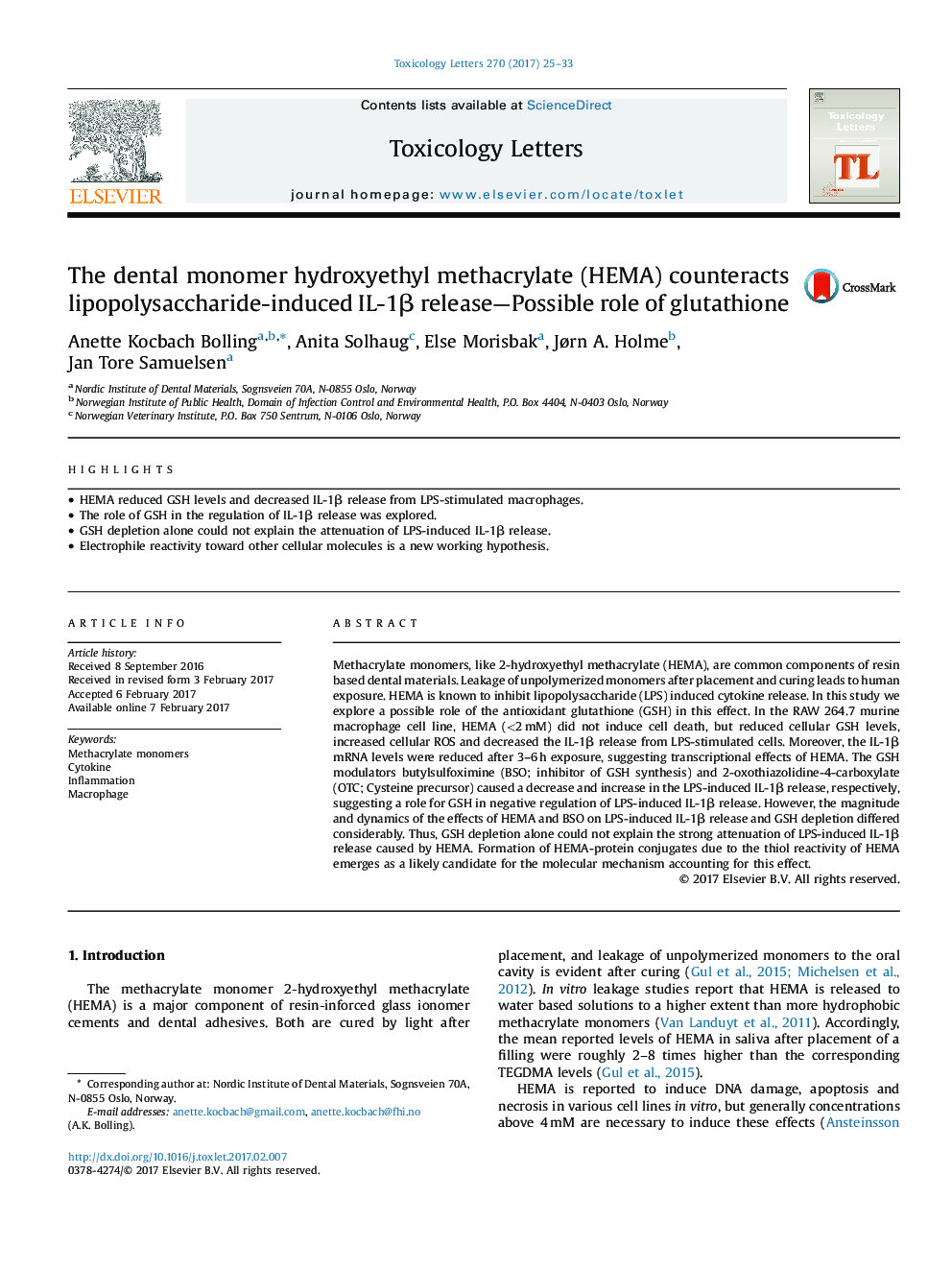| Article ID | Journal | Published Year | Pages | File Type |
|---|---|---|---|---|
| 5562149 | Toxicology Letters | 2017 | 9 Pages |
â¢HEMA reduced GSH levels and decreased IL-1β release from LPS-stimulated macrophages.â¢The role of GSH in the regulation of IL-1β release was explored.â¢GSH depletion alone could not explain the attenuation of LPS-induced IL-1β release.â¢Electrophile reactivity toward other cellular molecules is a new working hypothesis.
Methacrylate monomers, like 2-hydroxyethyl methacrylate (HEMA), are common components of resin based dental materials. Leakage of unpolymerized monomers after placement and curing leads to human exposure. HEMA is known to inhibit lipopolysaccharide (LPS) induced cytokine release. In this study we explore a possible role of the antioxidant glutathione (GSH) in this effect. In the RAW 264.7 murine macrophage cell line, HEMA (<2 mM) did not induce cell death, but reduced cellular GSH levels, increased cellular ROS and decreased the IL-1β release from LPS-stimulated cells. Moreover, the IL-1β mRNA levels were reduced after 3-6 h exposure, suggesting transcriptional effects of HEMA. The GSH modulators butylsulfoximine (BSO; inhibitor of GSH synthesis) and 2-oxothiazolidine-4-carboxylate (OTC; Cysteine precursor) caused a decrease and increase in the LPS-induced IL-1β release, respectively, suggesting a role for GSH in negative regulation of LPS-induced IL-1β release. However, the magnitude and dynamics of the effects of HEMA and BSO on LPS-induced IL-1β release and GSH depletion differed considerably. Thus, GSH depletion alone could not explain the strong attenuation of LPS-induced IL-1β release caused by HEMA. Formation of HEMA-protein conjugates due to the thiol reactivity of HEMA emerges as a likely candidate for the molecular mechanism accounting for this effect.
